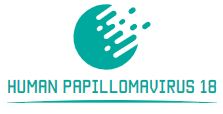Objective: To consider the efficiency of Hybribio humanpapillomavirus (HPV) typing test equipment for top danger HPV-DNA typing detection in screening of cervical precancer lesions.
Methods: A complete of 9 914 girls had been recruited in Henan, Shanxi, and Guangdong provinces from June to July 2017. All girls underwent HPV DNA test. The girls who identified as HPV constructive and cytological examination ≥ atypical squamous cells of undetermined significance (ASCUS) or HPV unfavourable and cytological examination≥low-grade squamous intraepithelial lesions (LSIL) underwent colposcopy biopsy and pathological examination.
Using the pathological analysis because the gold normal, the sensitivity, specificity, constructive predictive worth (PPV), unfavourable predictive worth (NPV), and 95% confidence interval (CI) of high-risk HPV and HPV16/18 exams had been calculated.
Results: The imply age of 9 914 topics was (45.0±9.3) years previous. Among them, 1 302 topics had been detected as excessive danger HPV constructive, together with 211 of HPV16 constructive and 64 of HPV18 constructive. According to the pathological gold normal of cervical intraepithelial neoplasia grade 2 (CIN2) or worse, the sensitivity and specificity of excessive risk-HPV and HPV 16/18 for triaging ASCUS girls had been 90.6% (95%CI: 75.8%-96.8%) and 78.0% (95%CI: 74.5%-81.2%) in addition to 56.3% (95%CI: 39.3%-71.8%) and 95.7% (95%CI: 93.8%-97.1%), respectively.

The sensitivity and specificity of excessive risk-HPV and HPV 16/18 for cervical precancer lesions screening had been 95.1% (95%CI: 88.1%-98.1%) and 87.6% (95%CI: 86.9%-88.2%) in addition to 65.9% (95%CI: 55.1%-75.2%) and 97.8% (95%CI: 97.5%-98.1%), respectively.
Conclusions: The Hybribio HPV test equipment has a relative excessive sensitivity and specificity for cervical precancer lesions screening and ASCUS triaging. It is dependable for HPV DNA detection and cervical cancer screening.
Differential expression of human papillomavirus 16-, 18-, 52-, and 58-derived transcripts in cervical intraepithelial neoplasia
The rise in humanpapillomavirus (HPV) an infection charges over the previous couple of many years in the USA has contributed to a major improve in the general incidence of sufferers identified with squamous cell carcinoma of the top and neck.
These head and neck carcinomas develop in the oropharynx, with greater than 90% of them brought on by an infection with high-risk HPV kind 16. Patients identified with HPV-induced oropharyngeal squamous cell carcinomas (OPSCCs) have a greater prognosis and remedy response than these identified with head and neck cancers brought on by alcohol consumption and tobacco use.
To determine sufferers with HPV-positive OPSCC, new pointers advocate constructive staining of oropharyngeal tissues for p16 INK4a (p16) by immunohistochemistry (IHC). Herein we talk about the testing algorithm that was adopted to handle discrepant outcomes between p16 IHC and a DNA in situ hybridization (ISH) test used routinely to diagnose HPV-positive OPSCC sufferers.A DNA polymerase chain response (PCR) test that amplifies HPV16 and HPV18 E7 was developed to assist in the analysis of HPV-positive OPSCC in a subset of sufferers. Specimens from these sufferers stained constructive for p16 by an IHC test, however unfavourable for high-risk HPV by a business DNA ISH test.
Moreover, these outcomes didn’t match the histopathological traits of the specimens, nor the scientific shows of the sufferers.Of 21 sufferers’ specimens that had been examined for p16 by IHC, 11 specimens confirmed concordant outcomes with the high-risk HPV 16/18 DNA ISH test. Whereas, in eight p16 IHC constructive specimens, HPV viral DNA was not detected by HPV16/18 DNA ISH, and two specimens weren’t examined by DNA ISH.
When these eight p16 IHC constructive specimens with discrepant p16 IHC and DNA ISH outcomes had been additional examined by DNA PCR, six specimens confirmed concordance with p16 IHC with constructive outcomes for HPV16 E7, whereas two specimens had been unfavourable for HPV16 E7 by DNA PCR. All examined specimens had been unfavourable for HPV18 E7 by DNA PCR.
Thus, the addition of the HPV16 and HPV18 E7 DNA PCR test recognized a major quantity of false unfavourable test outcomes by the HPV16/18 DNA ISH test and possible a number of false constructive outcomes by p16 IHC.Inclusion of an HPV16 E7 DNA PCR test improved the robustness of HPV-associated OPSCC analysis in sufferers with discrepant outcomes from p16 IHC staining and a DNA ISH test, and recognized sufferers for correct administration with much less misclassification.
Rapid and correct identification of humanpapillomavirus (HPV) is vital for each scientific administration and inhabitants screening. We carried out analytic validation of Atila AmpFire Multiplex HPV assays on formalin-fixed, paraffin-embedded (FFPE) cervix/vulva and oropharynx diagnostic tissue samples. The AmpFire assay incorporates a novel isothermal multiplex amplification coupled with real-time fluorescent detection to detect and genotype 15 high-risk (HR) HPV genotypes.
Limits of detection decided by plasmids cloned with HPV genotype-specific sequences had been 2 copies/response for HPV16, HPV18, and some HR HPV genotypes, and 20 copies/response for the remaining HR HPV genotypes. The efficiency of the AmpFire assays in scientific samples was evaluated utilizing 214 FFPE specimens. The AmpFire assay failed in one scientific specimen for an invalid charge of 0.5%.
The AmpFire assay detected HPV in scientific samples with constructive % agreements of 100.0% for HPV16, 100.0% for HPV18, and 94.7% for non-16/18 HR-HPV, and 100% unfavourable % agreements for HPV16, HPV18, and non-16/18 HR-HPV. Qualitative detection settlement was obtained in the reproducibility research.
In abstract, the Atila AmpFire HPV assay demonstrated glorious analytic sensitivity and specificity for detection and genotyping of 15 HR HPV genotypes. Assay parameters of easy specimen processing, small pattern dimension requirement, speedy turnaround time, and being close to instrument-free render it properly fitted to HPV detection and genotyping in FFPE specimens.
